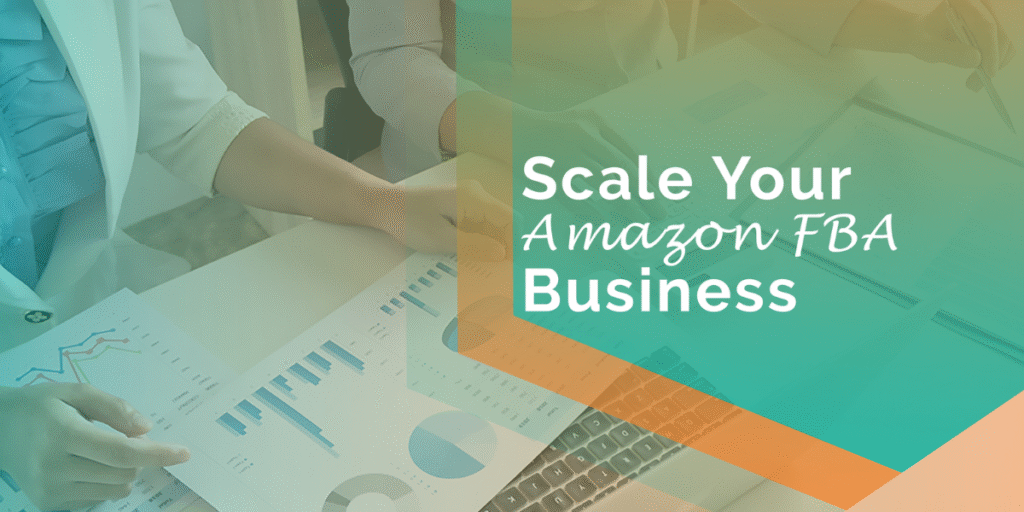Running an Amazon business offers one of the most scalable opportunities in modern eCommerce. However, scaling for long-term success isn’t just about increasing sales. It’s about building a sustainable brand, optimizing operations, and making data-backed decisions that position your business for consistent growth year after year.
Many sellers achieve initial success on Amazon, but very few manage to scale in a way that ensures continued profitability. In this comprehensive 2025 guide, we break down every strategy you need to transform your Amazon store into a powerful, lasting brand. From automation to product expansion and brand equity to customer retention, this is your roadmap to long-term success on Amazon.
What Scaling Means on Amazon
Scaling your Amazon business means growing revenue, expanding operations, and increasing profits without compromising quality, customer satisfaction, or margins. It involves implementing systems that allow you to sell more with less effort, hire strategically, and optimize every process from product sourcing to listing optimization.
A business that scales well does not break under its weight. As your order volume increases, your customer support, fulfillment, and marketing efforts must become more efficient, not more chaotic. That’s why scaling isn’t just about revenue, it’s about infrastructure.
Why Long-Term Thinking Is Critical
Many sellers focus on short-term wins: ranking a product, running ads, or cashing in on seasonal demand. But long-term success on Amazon requires a broader strategy. You need to create a resilient brand, understand your numbers deeply, and build strong supplier relationships.
Short-term tactics may get you quick wins, but sustainable scaling comes from consistency. Long-term thinking pushes you to build customer loyalty, invest in better inventory management, and keep your profit margins healthy. Amazon rewards those who deliver great customer experiences over time, and that begins with thinking beyond just the next month.
Building a Brand, Not Just a Storefront
The most successful Amazon businesses in 2025 are not just product listings, they are brands. Building a brand gives you pricing power, repeat customers, and a competitive edge. It also enables you to expand off Amazon when the time comes.
A brand has a story, a mission, and a recognizable voice. When you build a brand, you’re not just selling a product; you’re building trust. This leads to better customer reviews, lower return rates, and stronger conversion metrics across your listings.
Visual branding also matters. Your packaging, A+ Content, and storefront should all reflect your identity. As you scale, brand recognition becomes a vital part of customer retention and growth.
Diversifying Your Product Line Strategically
Adding more products to your catalog can fuel growth, but doing it blindly can stretch your resources and lead to failure. Strategic product expansion is about finding products that complement your current offerings, serve the same customer base, or solve additional problems.
Use Amazon tools like Brand Analytics, Helium 10, and Keyword Scout to identify demand gaps and consumer trends. Instead of chasing high-volume niches filled with competition, focus on underserved needs where you can create real differentiation.
When you diversify with intent, you reduce your reliance on any single product and open up new revenue streams. This also helps mitigate seasonal fluctuations and sudden changes in Amazon’s marketplace dynamics.
Mastering Inventory Management and Forecasting
Inventory mismanagement is one of the biggest scaling killers. Stockouts cause you to lose ranking and sales, while overstocking drains your cash flow. Proper forecasting allows you to maintain optimal stock levels and avoid unnecessary fees from Amazon’s fulfillment centers.
Scaling means dealing with larger purchase orders and lead times. It’s essential to track inventory turnover, supplier timelines, and demand spikes. Using software for inventory forecasting can help you make smarter buying decisions and avoid manual guesswork.
As your business grows, consider splitting inventory across multiple fulfillment methods. FBA is powerful, but adding FBM or third-party logistics (3PL) gives you more control, especially when dealing with international markets or oversized items.
Automating Operations Without Losing Control
One of the key components of successful scaling is automation. The more you grow, the harder it becomes to manage everything manually. Automation tools help streamline customer service, review requests, inventory syncing, and advertising.
Platforms like Sellerboard, FeedbackWhiz, and Zapier allow you to set up systems that save time and reduce human error. But automation isn’t just about saving time; it’s about building reliability. When your operations run on autopilot, you can focus on strategy instead of firefighting.
Still, it’s crucial to keep oversight. Review your automated systems regularly to ensure they’re performing as expected. Automation should serve you, not replace your judgment.
Expanding to International Marketplaces
Amazon’s global reach makes it easier than ever to sell internationally. Expanding to marketplaces like Amazon UK, Germany, Canada, and Japan can significantly boost your revenue. But international scaling requires careful planning.
Each marketplace has its own tax regulations, language requirements, and customer expectations. It’s vital to localize your listings, understand international shipping logistics, and register for programs like Amazon’s Global Selling.
The reward? Access to untapped audiences and diversified revenue sources. Businesses that scale globally position themselves far ahead of those limited to domestic markets.
Optimizing Advertising for Scalable ROI
Amazon PPC is a powerful tool, but without optimization, it can eat into your profits. Scaling your business requires a deep understanding of ad metrics and campaign structure. Every dollar spent must contribute to growth, not just visibility.
Use advertising to fuel product launches, boost BSR, and dominate top search positions. As you grow, transition from manual campaigns to advanced structures with segmented targeting. Regularly analyze ACoS, TACoS, and conversion rates to ensure profitability.
In 2025, Amazon’s advertising platform will have evolved to include video ads, DSP, and off-Amazon retargeting. Leveraging these tools can boost your brand authority and long-term presence across the platform.
Investing in People and Processes
As your business scales, you can’t do everything alone. Hiring virtual assistants, PPC specialists, copywriters, and customer service reps allows you to focus on growth rather than execution.
But it’s not just about hiring people, it’s about building systems. Every team member should follow documented processes and use standardized tools. Standard operating procedures (SOPs) reduce errors and maintain quality as you scale.
When roles and responsibilities are clear, your team becomes a growth engine. You can delegate without fear and ensure your brand maintains its standards as order volume increases.
Using Data to Drive Decisions
Gut instinct may get you started, but scaling requires data. Every decision, from product selection to pricing, should be backed by metrics. Monitor your conversion rates, return rates, customer reviews, and advertising data closely.
Tools like DataHawk, SellerApp, and Amazon Brand Analytics offer insights that can guide your strategy. Understand what’s working, what needs improvement, and where your biggest opportunities lie.
Businesses that prioritize analytics make smarter decisions and avoid costly mistakes. Data helps you refine your approach and spot trends before competitors do.
Preparing for External Disruptions
Long-term success on Amazon also means preparing for the unexpected. From global supply chain disruptions to algorithm updates and policy changes, the landscape can shift quickly. Sellers who have contingency plans in place weather storms better than those who react too late.
Diversifying suppliers, maintaining cash reserves, and being flexible with fulfillment options can protect your business during downturns. Building your customer base off Amazon via email or social media also gives you a lifeline when platform policies change.
The key is to expect change and build resilience into your business model.
Conclusion
Scaling an Amazon business for long-term success in 2025 is both a science and an art. It’s about combining proven systems, smart data, and brand-building strategies that outlast trends and survive market disruptions. True scaling doesn’t just mean selling more, it means building better. It means creating a brand that customers love, trust, and return to.
If you’re ready to take your Amazon business to the next level, reach out to our team. Let Amazon FBA Agency help you scale smartly and sustainably.
FAQs
How long does it take to scale an Amazon business?
It depends on your resources, product selection, and strategy. Most businesses begin to see scalable growth within 12 to 24 months when they invest in branding, marketing, and operations.
Can I scale my Amazon store without hiring a team?
It’s possible in the early stages, but eventually, you’ll need help to manage growth efficiently. Outsourcing repetitive tasks and hiring experts allows you to focus on high-level strategy.
Is it necessary to sell in international marketplaces?
No, but international expansion offers new growth opportunities and can help diversify your revenue. It’s a strategic move for businesses that are already established in their domestic market.
How much inventory do I need to scale?
You need enough inventory to meet projected demand without overstocking. Inventory forecasting tools and sales data can help you calculate safe, scalable inventory levels.
What if my advertising costs increase as I scale?
That’s expected, but it should be proportional to your growth. Regular optimization ensures your advertising remains profitable and supports long-term success.




